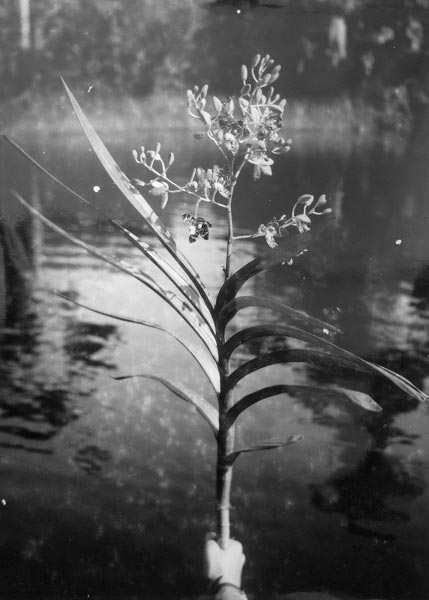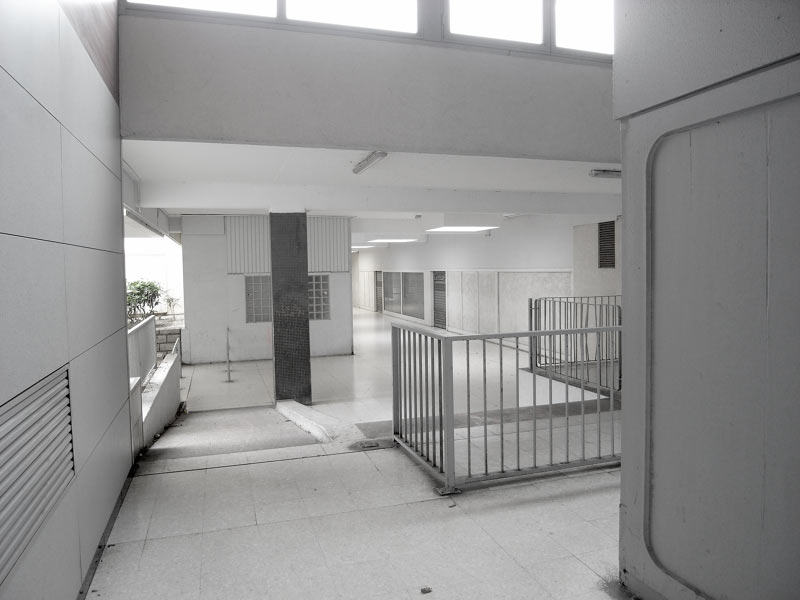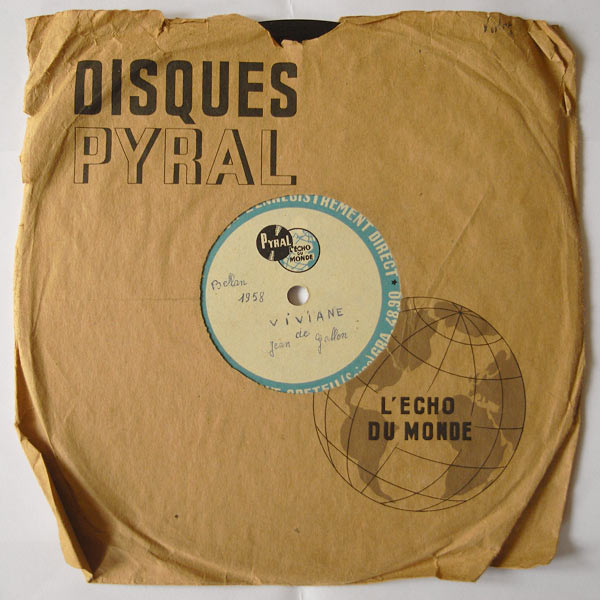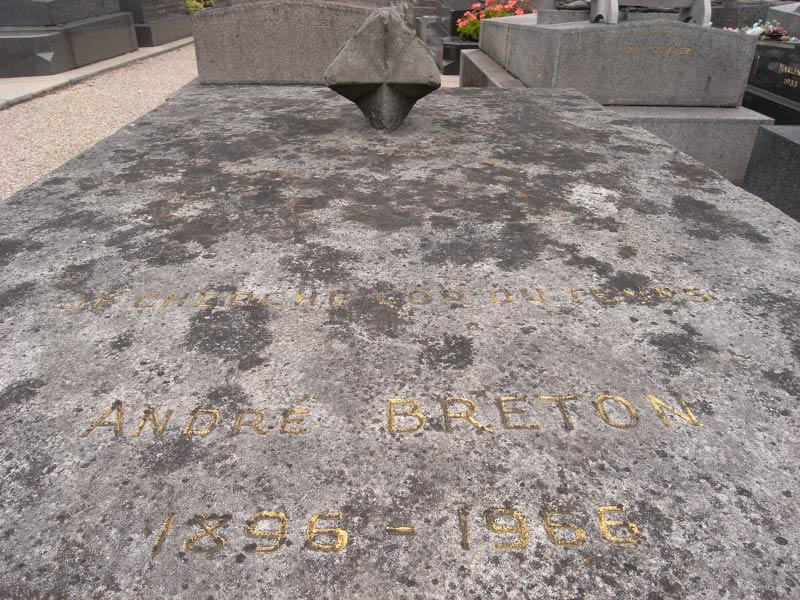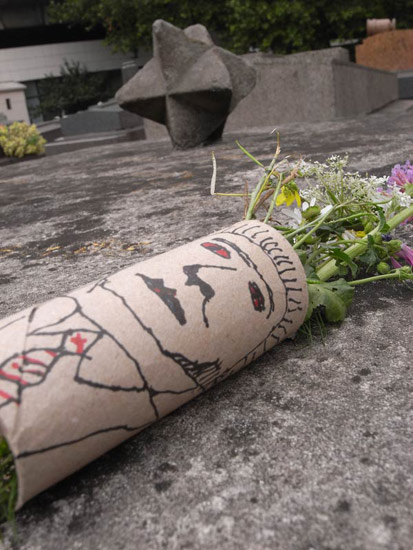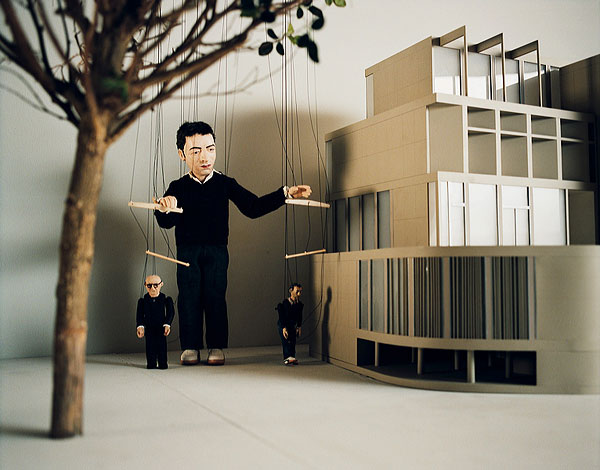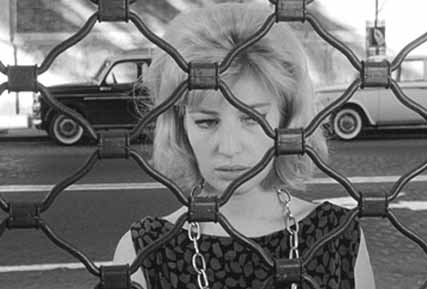Black and white 8 x 10″ photograph found in 2nd-hand bookstore, Marseilles 15/8/07.
Monthly Archives: August 2007
Misreading Modernism
Last week (14/8-15/8/07) I traveled to Marseilles for the express purpose of visiting Le Corbusier’s Unité d’habitation. Completed in 1952 after a protracted process of construction in the years directly following world war II, the building is one of the architect’s most instantly recognisable works. It is also perhaps one of his most misrepresented, at least in terms of current design culture. The building engages an overt formalism that has in many ways come to define popular conceptions of high-modernist aesthetics. Indeed, many of the shapes and forms present in the structure, particularly on the roof area, can be seen to echo through much ‘kitsch’ industrial design of the 1950s to 70s. It is, as theorist/artist Mark Lewis recently observed of modernist buildings, “almost already an image in both complicated and simple ways.” However, to engage with the building (and indeed the architect’s oeuvre) in purely aesthetic terms, as much contemporary design culture seems to do, is to create such a simple image. It is to ignore ideas that that are absolutely integral to the building’s creation. For Le Corbusier the building was to be the first in a community of structures that were to present a new ideal for living. An ideal, that in the architect’s words, sought to to balance “individual freedom and collective organisation”. The voice of history calls: form is never just form. So what of the building today? It is a slightly run-down, fully functioning apartment block in a unremarkable part of town that also caters for a modest flow of architourists. If it is not the most luxurious hotel in the world it sure can’t be beat as place to contemplate the complexities that accompany its image.
To read the Mark Lewis quote in context: Is Modernity Our Antiquity? in Documenta Magazine No 1, 2007, Taschen, Cologne, 2007 which is online here
Avant >> Aprés
This is the title of the current temporary exhibition (until sept. 16) at La Cité de l’Architecture et du Patrimoine. The exhibition consists of 150 short films about architecture presented across a continuous sweep of 24 projections. These span the entire length of the north wing of the Palais de Chaillot, the monumental modernist/classical building that houses the museum and that sits on the Seine directly opposite the Eiffel Tower. Watching the films is in itself an exercise in perpetual montage as even the most attentive viewer is invariably drawn to another screen when their interest wanders from the program they are watching. Perhaps it should be subtitled, one never-ending film about architecture that you cut yourself. After spending a few hours in the exhibition I set about making a list of ways that the filmmakers had addressed the problem of representing architecture. What conventions and strategies (filmic, conceptual or otherwise) are employed to render and translate the lived 3D environment as film?
supplementary image sources:
- archival still images
- archival film footage
- conceptually related (perhaps) footage from narrative films
- media sourced footage (tv shows, documentaries etc)
- stock images and footage
camera techniques:
- tracking shots, dolly shots
- panning
- 1st person POV (steadycam etc)
- mobile camera (vehicle, helicopter etc.)
- time lapse
- variations in lighting (time of day etc)
post techniques:
- transitions (dissolves, wipes, fades)
- superimposition
- image masking (time based reveals etc)
- spatial montage (split screen, image in image)
use of the human figure:
- occupying/operating in space (working, relaxing etc)
- historical signifier (through costume and look)
- guide to scale
soundtrack:
- atmos
- dialogue
- voice over
- music, classical
- music, electronic
- sound assembalge
L’echo du monde
Je cherch l’or du temps
I seek the gold of time. These words are inscribed on the tombstone of André Breton. Today I made a pilgrimage to his grave which is located in the Batignolles Cemetery on the edge of the 17th Arrondissement. The cemetery is also the resting place of Paul Verlaine and surrealist Benjamin Péret. During the hours I spent at the cemetery I saw 3 other people. This included a woman who was washing her car in a secluded corner of the graveyard right near Breton’s grave, as you do. I left a small tribute made of a simple portrait and a collection of flowers I gathered from the edge of the abandoned high school that skirts one edge of the cemetery.
This is not a time for dreaming
Two posts in a row about someone named Pierre – I must be in Paris. One of the best contemporary artworks I have seen since arriving in this city of light is a film by Pierre Huyghe called “This is not a time for dreaming”. Shot on super 16mm and transferred to digital video it is displayed in The Centre Pompidou as part of the Musée National d’Art Moderne. Essentially a film of a marionette show, it tells the story of Le Corbusier’s protracted commission from Harvard University to build the Carpenter Center for the Visual Arts. It was a project that was begun by the architect in 1959 but not completed until 1963. By which time he was unable to attend its opening due to ill health. Huyghe relates this legendary tale of bureaucratic wrangling to his own experiences with Harvard who commissioned him to make a work to celebrate the 4oth anniversary of the Carpenter Center. Highly interpretive in nature with shifting frames of reference the film features an array characters that includes Le Corbusier, Huyghe himself and a Dean of Harvard that has to be seen to be believed. Talk about biting the hand that feeds you. With the exception of a closing epilogue (presented by a real-life character) the tale is without dialogue using excerpts from the compostions of Varése and Xenakis (both of whom worked with Le Corbusier on the Philips pavillion for the 1958 world fair in Brussels) to underscore the action. Watching the marionettes, that posses a definite Thunderbirds-like edge, I couldn’t help but be reminded of the lofty ambitions of the character in Being John Malkovich who elevates the marionette to the status of high art. But unlike the puppeteering featured in that film Huyghe never foregrounds the expressive qualities of the pupeteer’s craft, his marionettes are personable yet disembodied. And here lies one of the major strengths of the work. In using puppets and adopting a lose and shifting narrative framework Huyghe has made a work that is far from didactic. What so easily could have been yet another example of institutional backbiting is instead presented as a magical tale that ultimately attests to the the transformative power of the creative act.
Pierre Henry – Esplanade de la Défense
On Saturday August 4 I was fortunate enough to attend the performance of Objectif Terre by composer/sound artist Pierre Henry, Henry who is now in his 8oth year was a musique concréte pioneer working with Pierre Schaeffer from 1949-58 and has maintained an active practice since. The performance took place in front of the La Defense Arch at sunset and lasted about an hour and fifteen minutes. Using enormous stacks of speakers that delivered a sound equal to the monumental scale of the site Henry presented an often terse but constantly evolving sound work that juxtaposed recognisable “found” sounds with those of an indeterminable source. The strategic placing of speakers around the esplanade provided the sound with a high degree of spatialisation and physicality. This sense of physicality allowed the sound to enter in a unique dialogue with the site, casting it in a otherworldly shade. What is an is in effect an everyday business district was a transformed into something alien and foreboding. If as Henry has stated the work Objectif Terre is concerned with a sense of “ecology” its presentation within the conext of the La Defense site provided a compelling argument for the ability of art (however abstract in its form) to enter into a dialogue with the apparatus of power.
Michelangelo Antonioni RIP
It is indeed one of life’s strange coincidences that Michelangelo Antonioni should pass away on July 30 2007 the very same day as Ingmar Bergman. As one friend has put it, if Antonioni’s death was a shock it was perhaps due to the assumption that many had, that he had died years ago, such was his physical state and absolute inactivity. L’Avventura, L’Eclisse and Il Desserto Rosso are among my favourite films ever, such visually arresting, open ended tales of existential impasse. For me these are films that engage with the environment (built or otherwise) in a startlingly original manner. For Antonioni site does not simply equal stage. Rather, architecture is unmistakably implicated in the proceedings. From the detached modernism of the EUR district of Rome to the almost alien industrial landscape featured in Il Desserto Rosso we are shown are world that is strangely ill at ease with itself and a time out of joint.
Monica Vitti in L’Eclisse 1962

